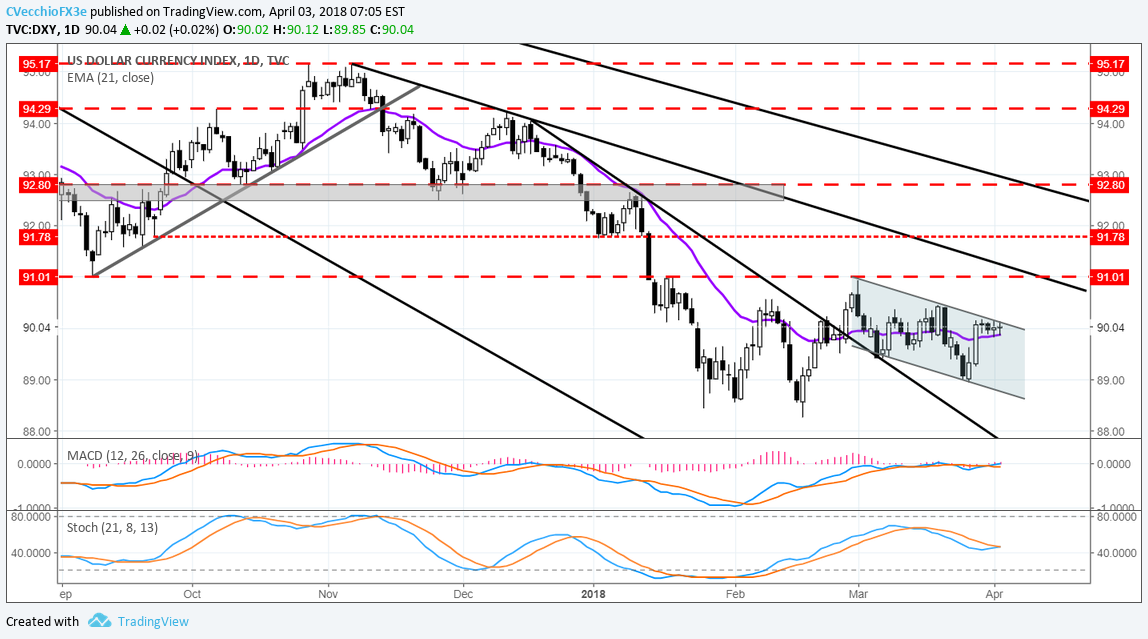The US Dollar (via the DXY Index) has proven sturdy at the start of the new month and quarter as European markets have come online for the first time since last Thursday. Reinvigorated tensions between China and the US thanks to a series of comments by US President Trump have hit global equity markets again, with tech stocks in the US selling off particularly hard.
The newswire is likely to be the prime source of event risk during the North American trading session today as the economic calendar is rather dry for Canada, Mexico, and the United States. While more incendiary comments regarding NAFTA have crossed the wires, they’ve had little impact on pairs like USD/CAD and USD/MXN thus far. Attention and concerns is more focused on US-China trade tensions than NAFTA, it would reason.
Elsewhere, deterioration in the preliminary March Eurozone PMI figures – perhaps weighed by the strong Euro itself – have allowed EUR/USD to stay pointed to the downside, if only minorly. The Eurozone Citi Economic Surprise Index, a gauge of economic data momentum, now sits at a disparaging -56.8, down from its 2018 high of +59.7 on January 11.
Price Chart 1: DXY Index Daily Timeframe (September 2017 to April 2018)

The global equity market sell-off yesterday, led by stock markets in the United States, coupled with weakening Eurozone data, may be helping keep the US Dollar afloat as April and Q2’18 trading gets underway. The DXY Index has been holding above its daily 21-EMA for the past few sessions but remains within the descending channel established with the bearish daily key reversal on March 1.
Even in the event of a break out of the down channel from March 1, it would not be a reason to call a bottom in the DXY Index yet. While price is no longer trading within the downtrend from the December 2017 and January 2018 swing highs, price still remains below 91.01, the 2017 low set on September 8 (which subsequently marked a morning doji star candle cluster failure in mid-January as well as the March 1 key reversal).













Leave A Comment